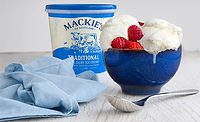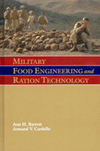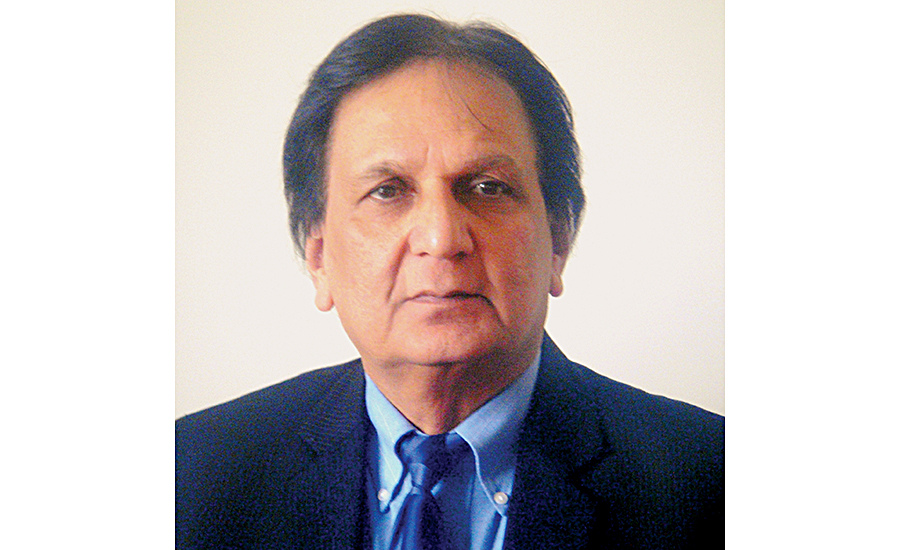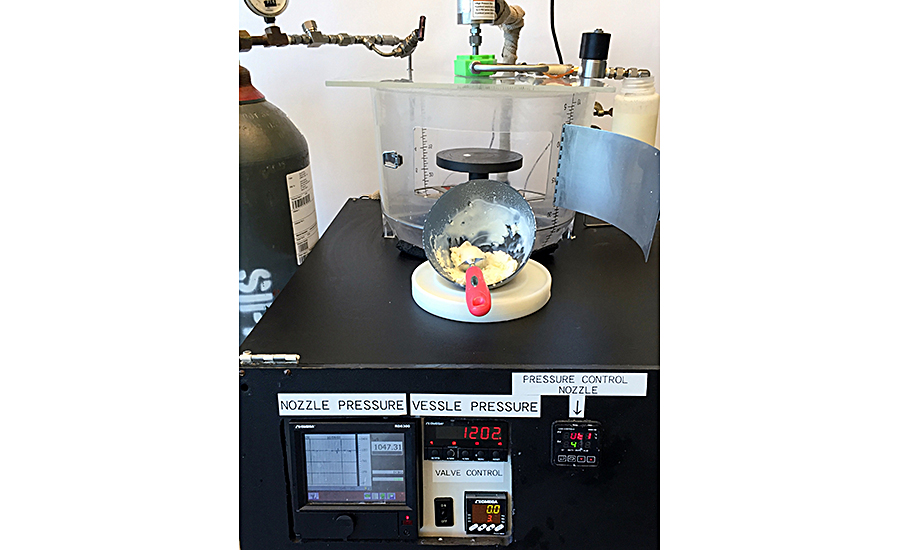Engineering R&D
Engineering instant ice cream that works as single serve and on an industrial scale
Invention uses supercritical CO2 to make ice cream, and it's scalable from single serve to vending machines to industrial production
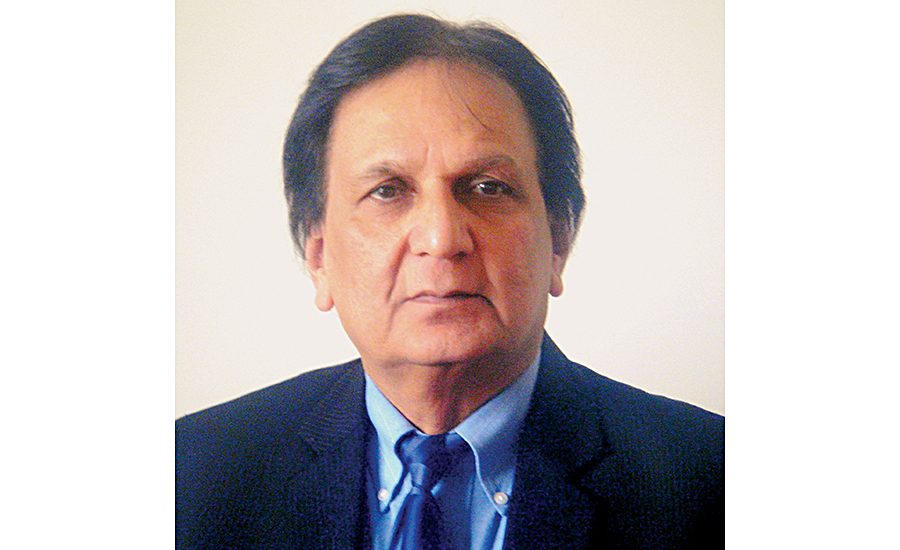

A prototype setup in Rizvi’s lab makes instant ice cream using supercritical CO2. Source: Andre Melnychenko.


Syed S.H. Rizvi is no stranger to supercritical carbon dioxide and other gas applications. More than 13 years ago, FE featured an Engineering R&D interview on a supercritical fluid extrusion (SCFX) process for cereal and snack-food products. (See “Super products with SCFX,” FE, April 2003.) Since then, Rizvi, professor of food process engineering at Cornell University, has been hard at work, researching other potential applications for supercritical CO2 and has come up with one for producing ice cream.
Rizvi and co-inventor, Michael Wagner, both from Cornell’s Institute of Food Systems, have filed a PCT (Patent Cooperation Treaty) application, entitled “Process and Apparatus for Rapid Freezing of Consumable and Non-consumable Products Using The Expansion of Dense Gas” (WIPO WO 2015/148882 A1). The patent document describes an apparatus and a process which can be used as a full-scale industrial process, in a vending machine or potentially in a single-serve package for consumers who need a little ice cream refreshment at a moment’s notice.
While there are ice cream processes that use liquid nitrogen as an ingredient, this process is different, says Rizvi. “We take a compressed, high-pressure gas and pass it through a nozzle to create a siphoning and cooling effect at the same time.” When CO2 at 1,500 psi is passed through a nozzle at an ambient room temperature of 20°C, it can cool down to -70°C, while the siphoning can be used to pull the ice cream mixture and other ingredients into a process vessel.
This process not only works for ice cream, but also for frozen juice treats (slushies). The process can run in a batch or continuous mode. FE asked Rizvi to further describe this invention.
FE: OK, an industrial process makes sense, but why vending machine or consumer?
Syed S.H. Rizvi: Storage and distribution of ice cream at around -130°F to -180°F (-250°C to -280°C) requires a complex and expensive cold chain infrastructure. Furthermore, the product may change hands up to 10 times during transit, and transportation constraints often cause the shipment to stray outside the recommended temperature range, threatening product integrity and safety. If you can push a button and enjoy your ice cream a few seconds later, nobody has to pay to keep it cold, and the good quality is guaranteed!
FE: How does this process work?
Rizvi: High-pressure CO2 is pumped through a specially shaped, 3D-printed eductor nozzle. The high-velocity CO2 jet just downstream of the nozzle cools down to -700°C to -800°C due to the Joule-Thompson effect and simultaneously generates a vacuum due to the Bernoulli effect, which pulls liquid ice cream mix into the eductor, no pumping required. The mixing of the two streams causes the liquid ice cream mix to freeze instantaneously, and the frozen ice cream is deposited into a bowl within a few seconds. Along with the mix, the vacuum also permits addition of flavor and additives via a manifold in the feed line.
FE: Could other gases be used in this process?
Rizvi: Yes, other food-safe gases could be used, but CO2 is better suited for efficient cooling and is food compatible. Its bacteriostatic effects and slightly acidic and sharper taste due to carbonation’s fizz makes CO2 the most attractive gas for food applications.
FE: Does some CO2 remain embedded in the ice cream? If so, how does this affect the flavor, texture and mouth feel?
Rizvi: Yes, some CO2 gets incorporated in the ice cream and increases the volume of the frozen product, giving it an overrun of about 30-35 percent. The entrapped CO2 also gives a mild, unique fizzy taste of carbonation and sparkle to the tongue. This process also allows for a fair degree of control of the draw temperature and, therefore, a one-of-a-kind mouthfeel. Since the freezing process occurs instantaneously, the resulting ice crystals impart a very smooth and silky texture to the final product. By controlling the size of the ice crystals, we can make ice cream with the familiar texture of conventional scrape-and-churn ice cream, or we can make more novel styles.
FE: Can this process work with other beverages such as slushies?
Rizvi: This process offers endless possibilities in making all types of frozen products and novelties. We have successfully produced slushies with Gatorade, Coke and Pepsi products, and have also made frozen yogurt. We can also make a carbonated milkshake by controlling the ice cream temperature. Another advantage of making slushies with this process is that it does not dilute the original drink as ice does when added to a drink.
FE: Since liquid or supercritical CO2 is required, how does the cost of making ice cream with your method compare with that of conventional industrial processes?
Rizvi: Considering the entire cost of the ice cream production, shipping and storage chain, our process is very attractive. To make one pound of ice cream requires roughly less than two pounds of CO2. The efficiency may be further improved by recycling the CO2 and improving the heat transfer processes. Additionally, on-site delivery with no storage requirement makes it an even better choice. Compared to conventional ice cream commercially available today, there is no need for stabilizers (gums) to be added to the ice cream mix to prevent texture change during storage. This makes the process even more cost effective and gives the final product a clean label.
FE: What about cost comparisons and the practicality of using this process in vending machines or in a single-serve package?
Rizvi: It needs to be perfected and evaluated. But again, the advantage of on-site production of ice cream over cold-chain delivery is a major advantage. Ice cream mixes could even be ultra-heat treated to allow for room temperature operation in vending machines. And, when you can make it on an as-needed basis, you never have to throw away old, freezer-burned ice cream.
FE: What would be the architecture of a single-serve package, and who could make it?
Rizvi: We have experimented with pre-meter single-serve containers, resulting in a nice-tasting single serving. A number of equipment vendors, gas suppliers and ice cream companies can make it.
FE: Have you talked to any industrial-scale processors about this technology, and what is their opinion?
Rizvi: Yes, we are in discussion and demonstrations mode with several companies. Their opinion ranges from the technology being disruptive to questions on scalability. The taste of a carbonated ice cream product is a big wow factor and a paradigm shift in organoleptic quality.
FE: Is equipment available to support this process?
Rizvi: The current unit uses off-the-shelf parts except for the eductor and the CO2 nozzle. The eductor can easily be printed using a 3D printer, and the machine can be built rather quickly. Under extreme conditions, the system can even operate in locations where there is no electricity.
FE: Anything I didn’t ask?
Rizvi: The consumption of ice cream in the Western countries is roughly about 20 liters per person per year. In countries like India and China, it is less than one liter. This is largely due to the constraints imposed by exacting logistics and mammoth infrastructure needed for ice cream production, distribution and marketing. If we can leapfrog into an on-site ice cream making process, milk will sell like gold.
Looking for a reprint of this article?
From high-res PDFs to custom plaques, order your copy today!





